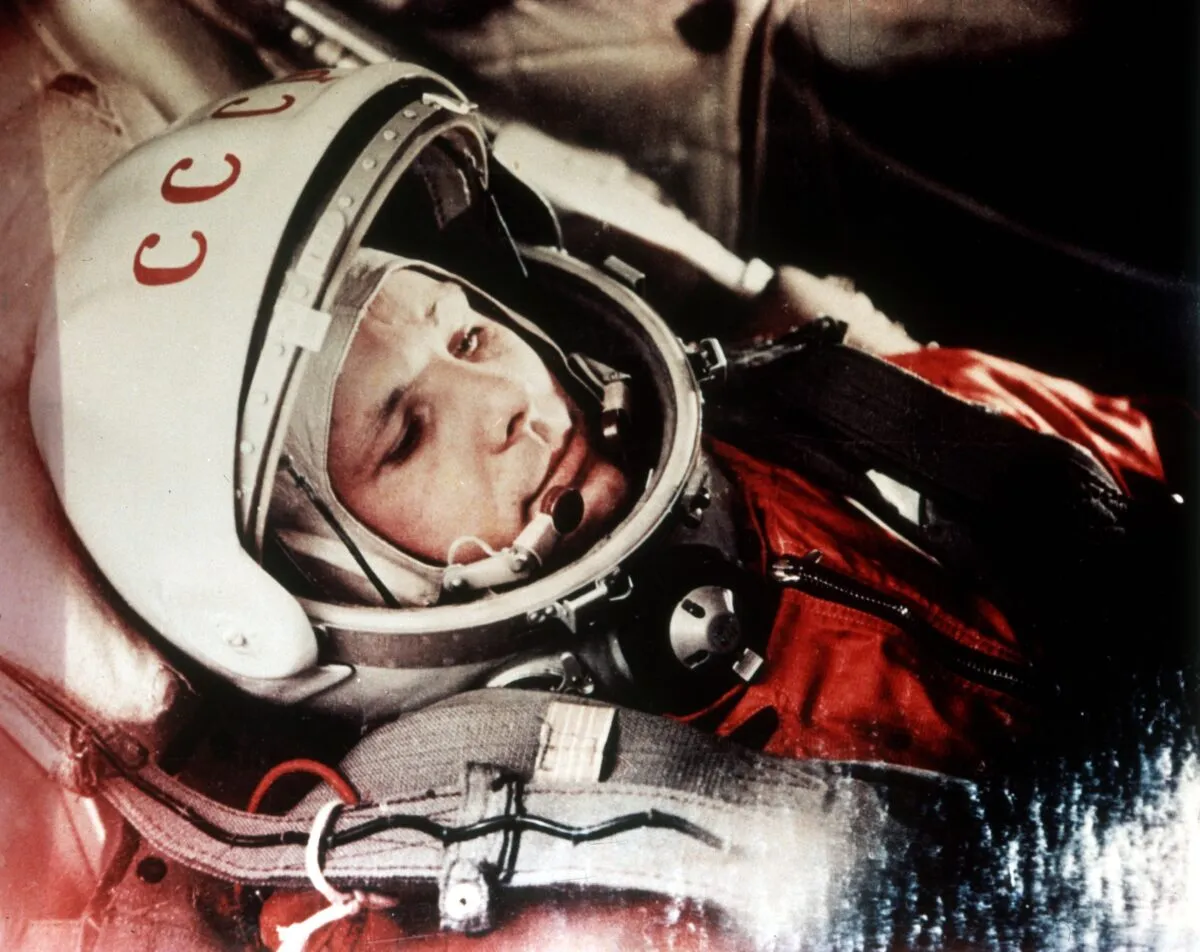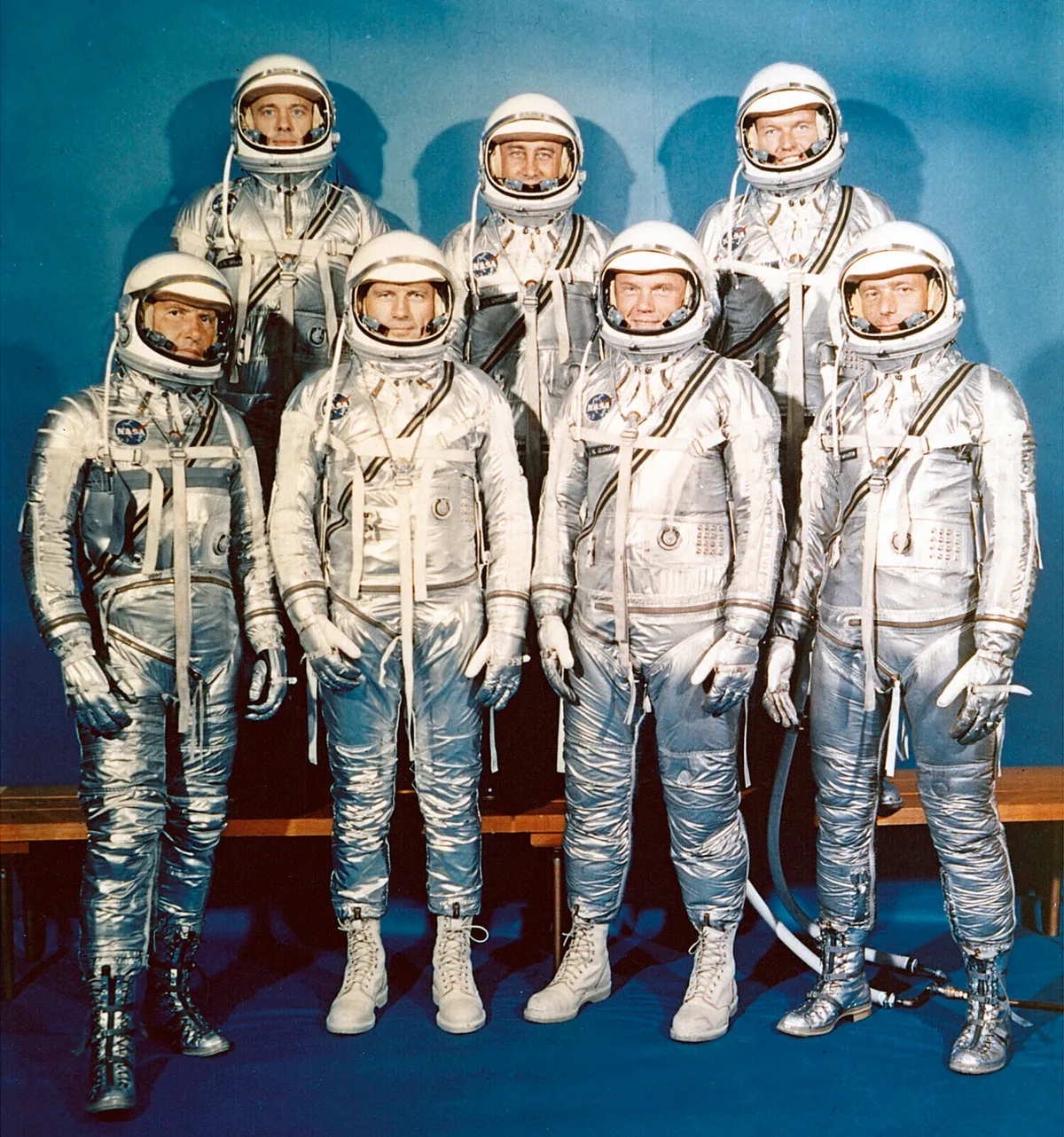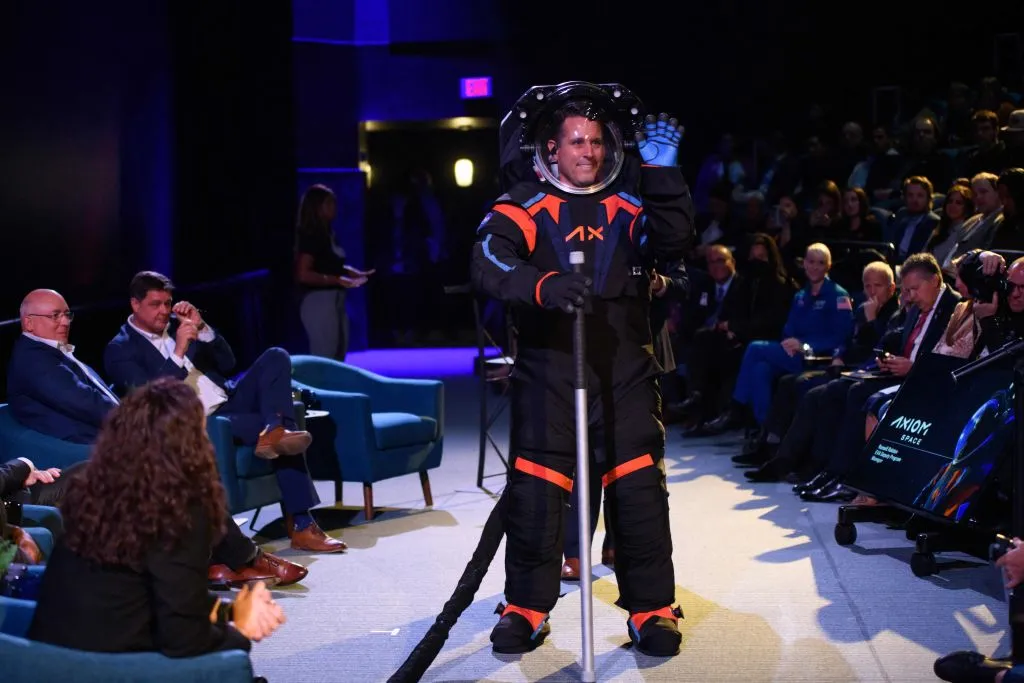While astronomers may not typically lead in the fashion stakes, there is one closely linked sphere that has moved with the times – that of spaceflight, the astronaut and, in particular, the spacesuit.
The basic template for the first spacesuit would have been drawn from attire affording protection for those working in similarly testing environments, such as the deep-sea diver and the aircraft pilot.
Clothing for both of these roles was functional and robust, with a proven track record of achieving what the suit was designed to do.
However, after rigorous testing of suits like these, doubt must have crept into the mind of even the most disciplined of astronauts.
Ancient astronauts and the very early Space Race

A leaky diving suit could potentially see its wearer pulled up from the watery depths quickly enough to save them.
But once you’ve ventured into space, the options for survival in one are more limited or, more accurately, nil.
As the Soviet Union and the USA jostled for the prize of putting the first human not just in space but on the Moon, the Space Race had begun.
NASA and its foreign counterpart grappled with one of the biggest headaches: potential damage to the membrane of the spacesuit while in space.
NASA had constructed a vacuum chamber to test its spacesuits.
Dubbed the ‘Moon Room’, it was apparent early on that the agency was more interested in the long game.
First spacesuit

With Sputnik-1 already in the bag for the Soviets, Yuri Gagarin’s spacesuit, the SK-1, became the first spacesuit ever used.
SK-1 stood for the Russian Skafandr Kosmicheskiy, literally translated as ‘diving suit for space’.
With the Americans close on their heels, the Moon loomed even larger on the horizon, and it’s here that NASA ramped up their spacesuit efforts.
First NASA spacesuits

The Mercury, Gemini and subsequent Apollo programmes put the US firmly back on the map, with the Mercury spacesuits of the late 1950s and early 1960s looking sharp and dapper, and certainly iconic for any science-fiction writer of the time.
Shiny silver in appearance, the Mercury 7 were in town with a more fashionable but still functional spacesuit.
The Mercury spacesuits were to be only worn inside the spacecraft, while the Gemini suits were designed for tethered activity outside the capsule.
The Moon, though, demanded greater protection against extreme temperatures and the harsh lunar environment
And with the Apollo spacesuits fitted with their own life-support system, a new era had begun.

Modern spacesuit era
As private business has entered the field of spaceflight in the past few decades, a shift in approach to spacesuit design, manufacture and appearance has become evident.
As the desire to progress to a ‘next generation’ look commenced, the spacesuit has turned into more of a product.
And with crewed missions to the Moon and Mars on the radar, a new long game has arrived.

The primary objective of the spacesuit is to protect the person within, but technological advances have allowed the suit to outgrow that objective, turning the cumbersome look of yesteryear, that leaned so heavily on safety, into a smarter design.
And while the look of the spacesuit has changed, it’s only down to the advances in science that underpin the fabric.
This article appeared in the November 2023 issue of BBC Sky at Night Magazine.
